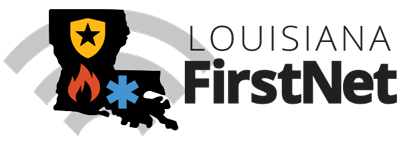
Information and communication are critical to all public safety personnel, but unlike first responders equipped with tools such as guns, hoses and medical equipment – information and communication are the primary tools for emergency managers to successfully perform their duties during incident response.
Emergency managers are often working from an Emergency Operations Center (EOC) where it can be difficult to build a Common Operating Picture (COP) and share situational awareness with first responders in the field. The wide-scale adoption of mobile command vehicles by many public safety agencies has helped bring command staff closer to field personnel; however, incident management is still a challenging job that is dependent on information and communications.
Emergency managers must have situational awareness in order to know what resources to deploy, when and where. The flow of information coming into the EOC is just as important as the information going out. Technology innovations in public safety, and in particular emergency management, have been rapid since 9/11. Magnetic boards have been replaced by Incident Command Systems (ICS) applications which provide emergency managers with tools such as real-time video, mobile mapping, resource tracking and integrated multimedia managers that provide a live Common Operating Picture (COP) for both command and field units to maximize efficiency in precise force deployment with shared situational awareness. ICS and other applications have been extended to first responders in the field through the evolution of wireless data networks.
To date, emergency management has relied almost exclusively on commercial carrier networks or satellite for mobile data service. And while carrier networks typically provide reliable service, they are not always available when and where first responders need them most. Satellite can go to more places, but is hampered by high latency and higher bandwidth speeds can be cost prohibitive. During major incidents when public safety personnel have the greatest need for accessing critical data and applications, carrier networks are often brought down due to high congestion leaving responders without vital tools and information [1]. Public Safety Long-Term Evolution (PS LTE) will provide public safety a dedicated broadband wireless network to ensure that public safety officials have access to the right tools and information when and where they need it. [1] – For example, after the Boston bombing, commercial networks went down for 90-minutes during which time Incident Commanders relied exclusively on LMR voice communications with field personnel.
Louisiana SPOC
 James Waskom, Director – Governor’s Office of Homeland Security and Emergency Preparedness.7667 Independence Blvd.
James Waskom, Director – Governor’s Office of Homeland Security and Emergency Preparedness.7667 Independence Blvd.
Baton Rouge, LA 70806
(225) 925-7500
[email protected]
Stay Connected
To stay up-to-date on Louisiana FirstNet outreach, planning and information gathering activities, emergency managers can track progress at the Louisiana FirstNet Website.
To stay up-to-date on national FirstNet activities, emergency managers can track progress at www.firstnet.gov.
FirstNet Public Safety Advisory Committee Participation
Emergency managers may also want to contact members of the FirstNet Public Safety Advisory Committee (PSAC) and particiapte in outreach discussions at professional association meetings and conferences. The mission of the PSAC is to assist FirstNet in carrying out its duties and responsibilities.Specifically, the PSAC:
Emergency managers can provide input to FirstNet via the outreach efforts coordinated by the SPOC in each state.
